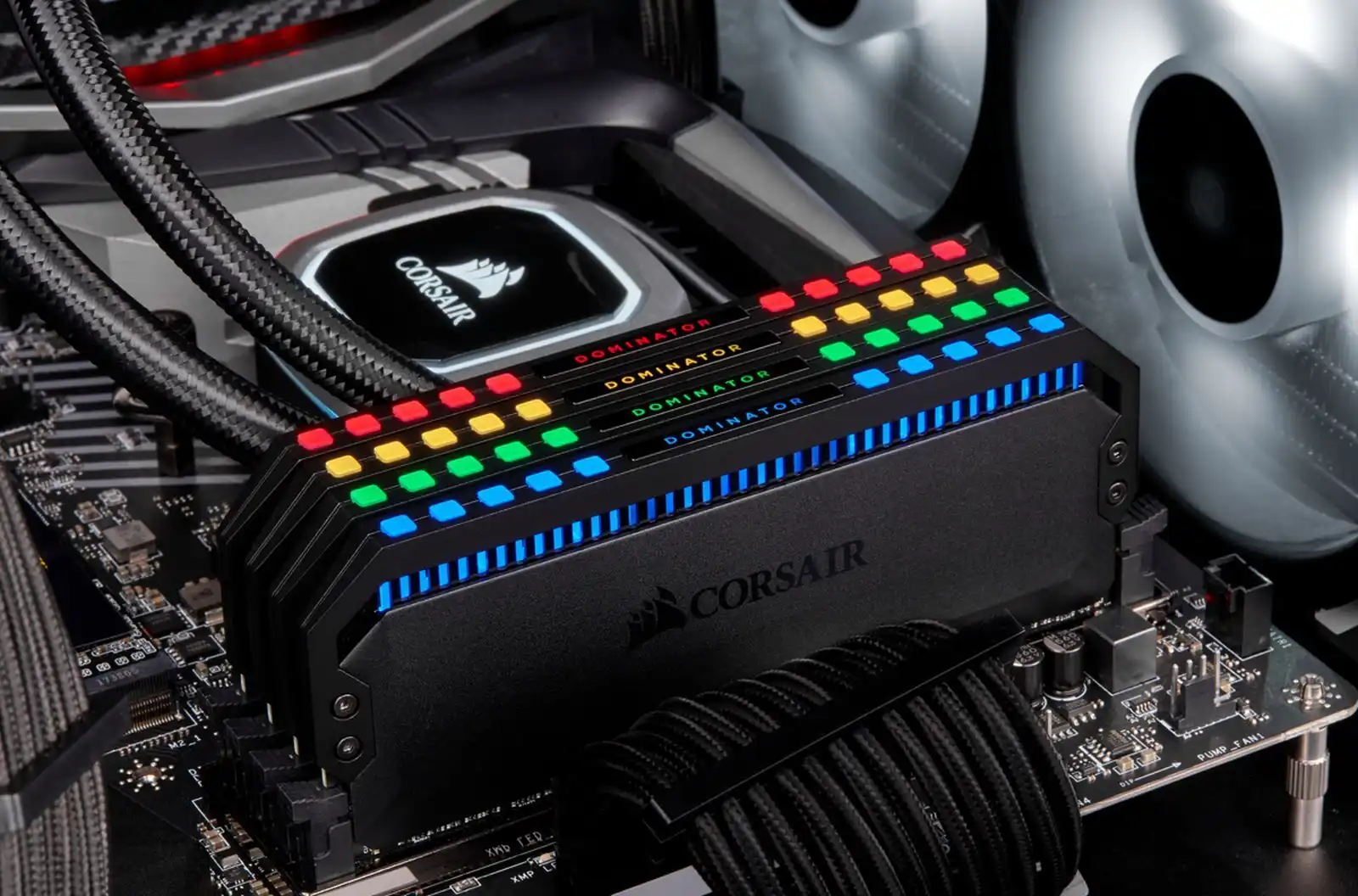Introduction
Welcome to another exciting article where we delve into the world of Android optimization! Today, we will be exploring a fascinating feature called Z RAM and its impact on the performance of your Android device. Whether you’re a casual smartphone user or a tech enthusiast, understanding Z RAM and its benefits can help you make the most out of your Android experience.
One of the key factors that contribute to a smooth and efficient device operation is the availability of free memory. Android devices, like any other electronic gadget, rely on RAM (Random Access Memory) to store and access data quickly. However, limited RAM can often result in sluggish performance, especially when running resource-intensive applications or multitasking.
This is where Z RAM comes into play. Z RAM, also known as compressed swap space or zswap, is a technology that allows Android devices to utilize a portion of their storage as a compressed form of RAM. It essentially creates a compressed cache of memory pages, allowing the operating system to store and fetch data more efficiently.
By using Z RAM, Android devices can effectively increase their available memory and improve overall performance without requiring additional physical RAM. It acts as a middle ground between traditional RAM and storage, providing faster access to data compared to accessing it from storage directly.
Z RAM utilizes a compression algorithm to shrink memory pages, making them take up less space within the device’s storage. This compression and decompression process happens in real-time and is seamlessly managed by the Android operating system. As a result, the device can store more data within the same amount of physical memory, effectively reducing the reliance on slower storage resources.
With the basic understanding of what Z RAM is and how it works, let’s dive deeper into the benefits it offers to Android users. From improved multitasking capabilities to enhanced app loading times, Z RAM has the potential to significantly enhance your device’s performance. So, let’s explore the myriad advantages of using Z RAM on your Android device.
What is Z RAM?
Z RAM, also known as Z Swap or compressed swap space, is a technology implemented in the Linux kernel that allows for the compression and usage of a portion of the device’s storage as a form of virtual RAM. In simpler terms, it acts as a bridge between the physical RAM and storage, providing a more efficient memory management solution for Android devices.
Traditional RAM is a limited resource on smartphones and tablets, and as applications become more resource-intensive, the demand for memory increases. When the available RAM is insufficient, the device relies on the slower storage to create swap space, resulting in decreased performance. This is where Z RAM comes in, offering a solution to this problem by compressing and utilizing a dedicated portion of the storage as virtual RAM.
So how does Z RAM actually work? When an application requires more memory than what is available in the physical RAM, instead of storing the excess data on the slower storage, Z RAM compresses the least frequently used memory pages and stores them in a compressed cache within the device’s storage. This cache is then treated as an extension of the RAM, allowing for faster data access and improved multitasking capabilities.
The compressed memory pages stored in the Z RAM cache are dynamically allocated and managed by the Linux kernel. As new applications are opened and more memory is needed, the least recently used pages are compressed and moved to the Z RAM cache, freeing up physical RAM for the current tasks at hand. This intelligent memory management ensures optimal performance and efficient memory allocation.
It’s important to note that Z RAM does not increase the total amount of memory available on the device; it simply provides a more efficient way to manage and utilize existing resources. By compressing the memory pages, Z RAM effectively allows for a larger amount of data to be stored within the same physical memory, reducing the reliance on slower storage and improving overall performance.
In the next section, we’ll explore the various benefits that Z RAM brings to Android devices, enhancing their performance in a multitude of ways.
How does Z RAM work?
Z RAM, also known as compressed swap space, operates by utilizing a portion of the device’s storage as a compressed form of virtual memory. This innovative technology improves the efficiency of memory management and performance on Android devices. Let’s explore the inner workings of Z RAM to better understand its functionality.
When an application requires more memory than what is available in the physical RAM, Z RAM comes into action. It compresses the least frequently used memory pages and stores them in a dedicated cache within the storage. This compressed cache acts as an extension of the RAM, providing additional memory space for the system to utilize.
The process of compressing and storing memory pages in the Z RAM cache is handled by the operating system. The Linux kernel, which powers Android devices, intelligently manages the allocation and compression of memory pages. As new applications are opened or memory demands increase, the kernel identifies the least recently used pages and compresses them, freeing up physical RAM for the current tasks at hand.
Z RAM employs a compression algorithm to shrink the memory pages before storing them in the cache. This compression occurs in real-time and is transparent to the user. When the compressed memory pages need to be accessed, they are decompressed on-the-fly, providing efficient and quick access to the data.
The compressed memory pages in the Z RAM cache are treated as priority pages, meaning they are given higher preference for retention in memory. This ensures that frequently accessed data remains readily available, contributing to improved overall system performance and reduced latency.
It’s worth noting that Z RAM works alongside the existing physical RAM and complements its functionality. It doesn’t increase the total amount of memory available on the device but optimizes its utilization. By compressing memory pages and storing them in the Z RAM cache, the device can effectively handle memory-intensive tasks without relying heavily on slower storage access.
Ultimately, Z RAM enhances the performance of Android devices by providing an efficient solution for managing memory demands. It allows for better multitasking capabilities, faster app loading times, and smoother overall system performance.
Now that we understand how Z RAM works, let’s explore the benefits it brings to Android devices in the next section.
Benefits of using Z RAM on Android
Implementing Z RAM on an Android device brings a multitude of benefits to users, enhancing both the performance and overall user experience. Let’s take a closer look at the advantages of using Z RAM on your Android device.
1. Improved multitasking: One of the significant benefits of using Z RAM is its ability to enhance multitasking capabilities. By compressing memory pages and utilizing virtual RAM, Z RAM allows the device to handle multiple applications simultaneously without experiencing a slowdown. This means you can switch between apps seamlessly, keep background processes running efficiently, and enjoy a smooth multitasking experience.
2. Faster app loading times: Z RAM plays a crucial role in speeding up app loading times. As it provides a compressed cache for frequently accessed memory pages, the device has quicker access to the necessary data, resulting in reduced app launch times. This is particularly beneficial for resource-intensive applications, games, and large files that require extensive memory resources to load and run smoothly.
3. Reduced lag and improved responsiveness: Z RAM can significantly reduce lag and enhance the overall responsiveness of an Android device. By compressing memory pages and minimizing reliance on slow storage access for swap space, Z RAM helps improve the system’s responsiveness to user input. This means a smoother and more fluid user interface, faster touch response, and a more enjoyable user experience overall.
4. Better resource management: With the use of Z RAM, Android devices can better manage available resources. By compressing memory pages and efficiently allocating them in the cache, Z RAM reduces the strain on physical RAM and decreases the frequency of accessing the slower storage. This results in improved overall resource management, allowing the device to allocate memory more intelligently and optimize its performance.
5. Extended battery life: Since Z RAM reduces the need for accessing the slower storage and relies more on the compressed cache, it can contribute to improved battery life. By minimizing the frequency of storage accesses and utilizing memory resources more efficiently, Z RAM helps optimize power consumption, allowing your device to last longer on a single charge.
It’s important to note that the effectiveness of Z RAM may vary depending on the device’s hardware capabilities, system configuration, and the specific usage scenarios. While Z RAM can significantly enhance the performance of most Android devices, it is always advisable to consider the device’s specifications and available resources before enabling and utilizing Z RAM.
Now that we’ve explored the benefits of Z RAM, let’s move on to the next section to find out how you can enable Z RAM on your Android device and make the most out of this feature.
How to enable Z RAM on an Android device
Enabling Z RAM on your Android device can be a simple and effective way to optimize its performance. While availability and methods may vary depending on the device and Android version, here are some general steps to enable Z RAM on your Android device.
1. Check device compatibility: Start by checking if your device supports Z RAM. Not all Android devices have built-in support for Z RAM, so it’s essential to verify compatibility before proceeding. You can do a quick online search or consult the device’s user manual or manufacturer’s website to determine if your device supports Z RAM.
2. Root your device (optional): Enabling Z RAM typically requires rooting your Android device. Rooting grants you administrative access to the device’s operating system, allowing you to make system-level changes and modifications. Keep in mind that rooting your device voids the warranty and may have potential risks, so proceed with caution and make sure to follow reliable instructions specific to your device model.
3. Install a custom kernel (optional): In some cases, enabling Z RAM might require installing a custom kernel that includes support for Z RAM. Custom kernels are modified versions of the device’s existing kernel, offering additional features and customization options. If your device supports custom kernels, you can research and choose a reputable kernel compatible with your device and follow the installation instructions.
4. Use Z RAM management apps: There are several Z RAM management apps available on the Google Play Store that can help you enable and configure Z RAM settings on your device. These apps provide a user-friendly interface to manage and optimize Z RAM usage. Search for “Z RAM” or “Z Swap” in the Play Store, read user reviews, and choose a reliable app that suits your needs. Install and follow the app’s instructions to enable Z RAM on your device.
5. Edit system files (advanced users): For advanced users familiar with system files, another way to enable Z RAM is by editing system files directly. This method requires a file manager app with root access and knowledge of the specific system files related to Z RAM. Make sure to back up your important data and be cautious while modifying system files, as any incorrect changes can lead to system instability or loss of data.
Remember that the availability and methods of enabling Z RAM may vary depending on your device’s specifications, Android version, and whether or not it is rooted. It’s important to research and ensure compatibility and follow reliable instructions applicable to your specific device model.
Now that you know how to enable Z RAM on your Android device, let’s move on to the next section where we’ll explore how you can check the Z RAM usage on your device.
How to check Z RAM usage on an Android device
Checking the Z RAM usage on your Android device can provide valuable insights into its memory management and performance. Although the availability and methods may vary depending on the device and Android version, here are some general steps to check the Z RAM usage on an Android device.
1. Use system monitoring apps: There are various system monitoring apps available on the Google Play Store that can display detailed information about your device’s memory usage, including Z RAM. Search for “system monitor,” “memory monitor,” or similar keywords in the Play Store, read user reviews, and choose a reliable app that suits your needs. Install and open the app, navigate to the memory or RAM section, and look for the Z RAM usage information.
2. Check device settings: Depending on your device’s Android version and manufacturer customization, the settings menu may provide information about the device’s memory usage, including Z RAM. Go to the settings app on your Android device, search for “memory” or “RAM” in the search bar or navigate through the categories to find the memory or storage settings. Look for information about the Z RAM usage or virtual memory, where you can find details about its current usage.
3. Use ADB commands (advanced users): For advanced users familiar with Android Debug Bridge (ADB) commands, another way to check the Z RAM usage is through ADB commands. ADB is a command-line tool that allows communication between a computer and an Android device. Connect your device to a computer, ensure ADB is properly set up, and open a command prompt or terminal window. Use the “adb shell” command to enter the device’s shell, then run the appropriate ADB command to retrieve Z RAM usage information. Search for reliable sources and documentation specific to your device and Android version for the correct ADB command to check Z RAM usage.
Remember that the availability and methods of checking Z RAM usage may vary depending on your device’s specifications, Android version, and system configuration. It’s important to explore reliable sources, app reviews, and documentation specific to your device to find the most accurate and appropriate method for checking Z RAM usage.
Now that you know how to check the Z RAM usage on your Android device, let’s move on to the next section where we’ll provide some tips for optimizing Z RAM performance.
Tips for optimizing Z RAM performance on Android
To make the most out of Z RAM and ensure optimal performance on your Android device, here are some tips and tricks to consider.
1. Monitor Z RAM usage: Keep an eye on the Z RAM usage to gauge how effectively it is being utilized. If you notice consistently high Z RAM usage, it may indicate that your device could benefit from additional physical RAM or that certain applications are consuming excessive memory resources. Consider closing unnecessary apps or upgrading your device’s RAM if possible.
2. Limit background processes and apps: Reduce the number of running background processes and limit the number of open apps to minimize memory usage. Less memory consumption translates to better Z RAM performance and overall system responsiveness.
3. Optimize app usage: Some apps may consume more memory than others, impacting overall device performance. Identify resource-intensive apps and consider closing them when not in use or finding less resource-hungry alternatives. Additionally, regularly update your apps to ensure they are optimized for efficient memory usage.
4. Clear cache and junk files: Over time, cache files and junk files can accumulate on your device, taking up valuable memory resources. Regularly clear the cache and delete unnecessary files using the device’s built-in storage management settings or specialized cleaning apps. This helps free up memory and keep the Z RAM cache optimized.
5. Restart your device: Occasionally restarting your device can help refresh the system and free up memory resources. This can be particularly useful when you notice decreasing performance or increased memory usage. Restarting your device clears temporary caches and resets background processes, improving overall performance, including Z RAM utilization.
6. Update your device’s firmware: Keeping your device’s firmware up to date can bring performance improvements, bug fixes, and optimizations. These updates often include enhancements to memory management and performance, benefiting Z RAM utilization as well. Check for and install any available firmware updates through the device’s settings or manufacturer’s website.
7. Avoid resource-intensive tasks: Engaging in resource-intensive tasks, such as running multiple heavy applications simultaneously or playing graphics-intensive games, can put a significant strain on the device’s memory resources. Opt for lighter applications, close unnecessary processes, or consider upgrading your device’s RAM if you regularly engage in such tasks.
Remember that every Android device and user’s usage pattern is unique, so it may require some trial and error to find the optimal settings and practices for your specific device. Monitoring the Z RAM usage, managing apps and background processes efficiently, and following these optimization tips can significantly enhance the performance of Z RAM on your Android device.
Now that we’ve explored tips for optimizing Z RAM performance, let’s conclude this article by summarizing the key points we’ve discussed.
Conclusion
In conclusion, Z RAM is a valuable feature that can greatly enhance the performance of your Android device. By utilizing a portion of the storage as compressed virtual memory, Z RAM improves multitasking capabilities, reduces app loading times, and enhances overall system responsiveness. It effectively optimizes memory management, making better use of existing resources without the need for additional physical RAM.
Enabling Z RAM on your Android device involves checking device compatibility, rooting (optional), installing a custom kernel (optional), or using dedicated Z RAM management apps. By enabling Z RAM, you can experience the benefits of improved multitasking, faster app loading times, better resource management, and extended battery life.
To optimize Z RAM performance, it’s important to monitor Z RAM usage, limit background processes and apps, optimize app usage, clear cache and junk files, restart your device periodically, update firmware, and avoid resource-intensive tasks. Employing these tips will help ensure efficient Z RAM utilization and maximize your device’s performance.
Remember that while Z RAM offers significant performance enhancements, the results may vary depending on your device’s specifications, Android version, and usage patterns. It’s essential to explore and adapt these recommendations based on your specific device and user needs.
So, take advantage of Z RAM and unlock the full potential of your Android device. Experiment, monitor, and optimize Z RAM performance to enjoy a smoother, more efficient, and enjoyable user experience.

























